AP 10th Standard Science Paper II Exam Question Papers 2017 with Solutions – Free Download
In this article below, find the PDF format of the AP Board Class 10 Science Paper II 2017 Question Paper with solutions. These AP Board SSC question paper solutions are the best resource for those students who practise hard for the board exams. The Class 10 exam question paper is useful for the students as it helps them to ace the Science exams easily. With only a click, students can now get the PDF formats of the solved or the unsolved question paper, as per their preference. The clickable links are listed below in this article and are considered as a very helpful resource to prepare for the exams.
For students who are aspiring to achieve good scores in Science, mastering all the complex concepts related to the subject is the best option. Students will be able to easily ace the AP Board Class 10 Science Part II exam, if they know the complex formulas and equations of the subject, in depth. Students are encouraged to revise the entire subject before the exam and solve the previous papers of AP Board Class 10 Science Part II. Solving the papers is the best way to get an outline of the exam pattern. This will also help the students get familiar with the various question types that are normally asked in the board exams. Students will be able to gauge the difficulty level of the exams from these question paper solutions. It will also help them to scale their preparations for the exams.
Download AP Board SSC 2017 Science Paper II Question Paper
Download AP Board SSC 2017 Science Paper II Question Paper With Solutions
AP Board Class 10 Science Paper II 2017 Question Paper with Solutions
Part-A
Section- I 4 X 1= 4
1. Which is the disease seen in the child, when there is an immediate second pregnancy or repeated childbirths in a mother?
(Question is as per the Question Paper)
Answer: Preeclampsia, is a pregnancy complication characterised by high blood pressure and could also result in possible organ failure in the mother. If someone has suffered from preeclampsia during their first pregnancy, they are more liable to face it in their second pregnancy, as well. The condition, normally occurs after 20 weeks of pregnancy in women but it also occurs postpartum in some cases. If left untreated, preeclampsia could cause a liver or kidney failure and other potential cardiovascular problems. This could also result in a condition known as eclampsia, which can cause seizures in the mother. The more severe outcome was a stroke, which could lead to permanent brain damage or even maternal death. In babies, the condition could prevent them from receiving enough blood, thus giving the baby less oxygen and food. This leads to slower development in the womb, a low birth weight, premature birth, and stillbirth as well.
2. What happens if blood platelets are absent in blood?
Answer: The important function of a blood platelet is the coagulation of blood. So if the blood platelet is absent in blood, then the injured blood vessels will not stop bleeding, thus resulting in the death of the victim.
3. What questions would you ask a doctor who comes to your school on World AIDS Day?
Answer: Below are some questions to ask a doctor who visits your school during World AIDS Day:
- What is AIDS? Which is the virus that causes AIDS?
- How does it affect my body?
- How do I protect myself from AIDS?
- What are the factors contributing to the spread of AIDS?
- What are the precautions to take?
- What treatment options are there?
- How can I stay healthy?
- How do I stop the disease from spreading to others?
4. Suggest any two practices suitable for a farmer with less water resources?
Answer: Farmers with fewer water resources were motivated to use irrigation techniques
such as drip irrigation, sprinklers etc.(also collectively called micro-irrigation techniques). Construction of soak pits to tap rainwater optimally, was also carried out as community efforts. These soak pits help in recharging dried up bore wells. Dykes or barriers, nearly 30 cm thick of brick-cement or stone cement barrier, extending down to the compact bedrock, with mud or clay fillings were as well, built-in underground streams to tap groundwater, optimally.
Section-II 5 X 2= 10
5.
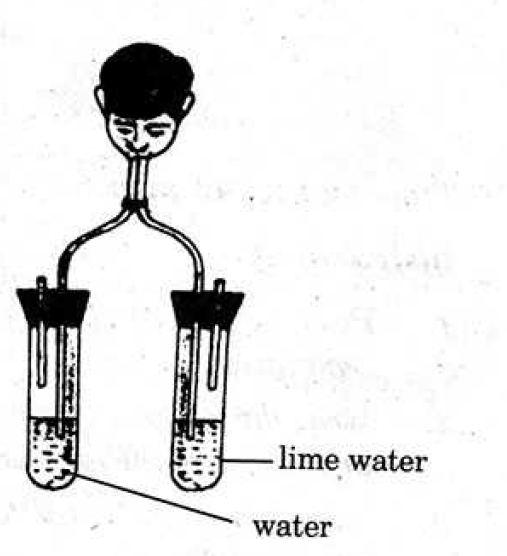
- Which gas turns the lime water milky in this experiment?
- Which gas do you think might be present in lesser quantities in the air that we breathe out, as compared to the surrounding air?
Answer: (a) When you breathe into a test tube with lime water using a straw, you will see that the carbon dioxide (CO2) gas passed through it turns it to milky.
(b) Oxygen might be present in lesser quantities in the air we breathe out as compared to the surrounding air.
6. After reading about the functions of lymphatic system, what precautions would you suggest to your elders as a protection against Edema?
Answer: While Edema is said to be incurable, there are certain precautions to follow which could help to reduce the swelling and pain. Complex decongestive therapy (CDT) begins with an intensive therapy phase, during which the patient receives daily treatment and training. Now the maintenance phase follows, when the patient is encouraged to take charge of their own care using techniques that have been taught including recovery exercises, skin care, lymphatic drainage manual and multilayer lymphedema bandage.
7. What habits would you like to follow for the proper functioning of Kidneys?
Answer: Here are some habits that you have to follow for the proper functioning of Kidneys:
- Reduce alcohol consumption and drink a lot of water
- Quit smoking
- Stop living a sedentary life and exercise frequently
- Avoid food that are high in sodium and salt
- Keep track of your blood pressure
- Using artificial sweeteners are more likely to raise the risk of kidney decline
- Avoid eating a lot of red meat
- Sleep properly
8. It is believed that the Diencephalon in fore-brain and vagus nerve (10th cranial nerve) plays an important role in carrying hunger signals to the brain. Hunger pangs continue up to 30-45 minutes. Increase in ghrelin levels results in sensations of hunger and motivation to consume food.
Read the above content and prepare any two questions.
Answer: From the content given above, please see the questions that can be framed:
(a)What is the function of Diencephalon in fore-brain and vagus nerve (10th cranial nerve?
(b) What causes sensations of hunger and motivation to consume food?
(c) How long do hunger pangs continue?
9. Explain the role of green house gases in Global Warming?
Answer: Deforestation destroys wildlife habitats and increases soil erosion, while also
releasing greenhouse gases into the atmosphere, thus contributing to global warming. Deforestation accounts for about 15% of the world’s greenhouse gas emissions. It also harms the people who rely on forests for their survival, hunting and gathering, harvesting forest products, or using the timber for firewood.
Section-III 4 X 4= 16
10. (A) During photosynthesis, several events occur in the Chloroplast. Explain the light dependent reactions.
Answer: 1. Light dependent reaction (Photochemical phase)
In this reaction, light plays a key role. A series of chemical reactions take place in a very quick succession, initiated by light and therefore, the phase is technically called the photochemical phase or light dependent reaction. The light reaction takes place in chlorophyll containing thylakoids called grana of chloroplasts. Several steps occur in the light dependent reaction:
Step-I : The chlorophyll on exposure to light energy becomes activated by absorbing photons. (Photon is the smallest unit of light energy)
Step-II: The energy is used in splitting the water molecule into two component ions named hydrogen (H+), hydroxyl ion (OH–).
H2O → H+ + OH– reaction is known as photolysis, which means splitting by light (photo means light, lysis means breaking). This was discovered by Hill and so was called Hill’s reaction.
Step-III: The highly reactive ions of water undergo quick change as described below.
OH– ions after undergoing a series of steps produce water (H20) and Oxygen (O2). Water may be used by the plant inside, but O2 is usually released into the atmosphere. H+ ions undergo a series of changes in dark reaction. compounds that can trap energy like ATP (Adenosine Tri phosphate) and NADPH (Nicotinamide Adenosine Dinucleotide Hydrogen Phosphate) are formed at the end of the light reaction.
Or
(B)
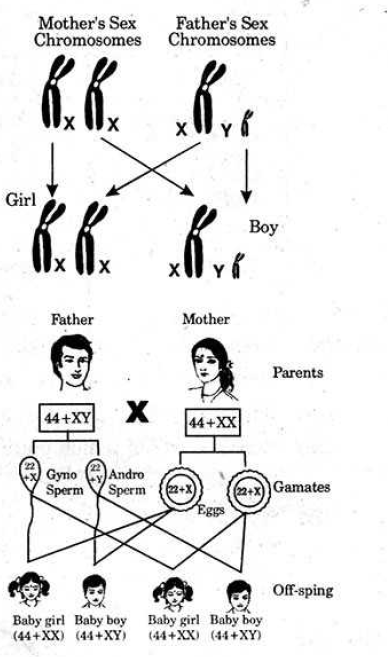
(i) What does the given flow chart indicate?
(ii) What will happen if the sperm containing ‘X’ chromosomes fertilises the ovum?
(iii)Who decides the sex of the baby-mother or father?
(iv) How many pairs of chromosomes are present in off-spring?
Answer: (i) The flow chart in the question indicates sex determination in human beings
(ii) If the sperm carries X chromosome and fertilises the ovum (X chromosome). Then, the baby will be a girl and will have XX condition.
(iii)Father decides the sex of the baby. All the gametes (ova) produced by a woman have only X chromosomes. The gametes (sperm) produced by a man are of two types, one with X chromosome and other Y chromosome. Depending on the chromosome carried by the sperm (X or Y), which fertilisers the ovum (X chromosome), the sex of the baby will be determined.
(iv) A human being has 23 pairs of chromosomes
11(A)
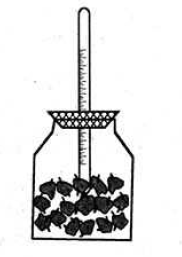
(i) What change did you observe in the thermometer in the given experiment?
(ii) Where does the heat come from?
(iii) What result will you get, if you perform this experiment with dry seeds?
(iv) What are the apparatus used in this experiment?
Answer: (i) Heat is evolved during the experiment thus increasing temperature in the thermometer placed in the flask
(ii) Heat is produced by the germinating seeds
(iii) If you perform this experiment with dry seeds there will be no change in the temperature
(iv) The apparatus used in the experiment include a bottle / beaker, thermometer and wet sprouts
Or
(B) (i) Explain the procedure followed in the experiment conducted to understand the action of saliva on starch
(ii) What apparatus and chemicals are used to do this experiment?
Answer: (i) Take a test tube half filled with water and add a pinch of flour to it. Shake the test tube well till the flour gets mixed. Take a few drops of this in a watch glass and test for the presence of starch by putting a drop of diluted tincture iodine in it. A blue-black colour confirms the presence of starch. Now again dissolve a pinch of flour into half filled water in a test tube.
Now divide the mixture into two equal halves by transferring it to another test tube. Note that both the test tubes have the same amount of solution. Add a teaspoon of saliva to one of the test tubes and mark it. Do not add anything in the other test tube. After 45 minutes, add a drop of dilute Tincture Iodine solution to test tubes containing the solution.
(ii) The apparatus and chemicals used in the experiment includes two test tube, flour, watch glass , tincture iodine, saliva
12 (A) Analyse the following information and answer the questions:
|
Alkaloid |
Part of tee plants |
Uses |
|
Quinine |
Bark |
Anti-Material Drug |
|
Pyrethroids |
Leaves |
Insecticide |
|
Reserpine |
Roots |
Medicine for snake bite |
|
Caffeine |
Seeds |
Central nervous system stimulant |
|
Nimbin |
Seeds, Barks, Leaves |
Antiseptic |
- Name the alkaloid which is used to cure malaria
- Name the alkaloids used as insecticides
- Which system is stimulated by the alkaloid caffeine?
- Which parts of which plants are used as medicine for snake bite?
Answer: (A) (a) Quinine is the alkaloid used to cure malaria
(b) Pyrethroids are the alkaloids used as insecticides
(c)Caffeine is used as the Central nervous system stimulant
(d) Roots of the reserpine plant is used as medicine for snake bite
Or
(B) Should we use pesticides as they prevent our crop and food from pests or should we think of alternatives? Write your view about this issue and give sound reason for your answer?
Answer: (B) It is better to use some alternative other than pesticides because pesticides are often indiscriminate in their action and a vast number of other animals may be destroyed. Some of these may be predators that naturally feed on these pests, others may be the prey for other animals. This causes unpredictable changes in food chains and upsetting the balance
within the ecosystem. A further danger is that some have a cumulative effect. Pesticides vary
in their length of “life” as toxic substances. Some pesticides and herbicides are degradable. They are broken down into harmless substances in a comparatively short time, usually a year. Others are non-degradable, and include those which contain mercury, arsenic or lead. These
non-degradable pesticides are potentially dangerous as they accumulate in the bodies of animals and pass right through the food web. Being further concentrated at each step until animals at the top of the pyramid may receive enough to do considerable harm. The process of entry of pollutants into a food chain is known as Bioaccumulation, whereas the tendency of pollutants to concentrate as they move from one trophic level to the next is known as Biomagnification. A long term solution to this problem is to find other effective methods of controlling pests, which have far less harmful effects and are based on sound biological principles.
13. (A)
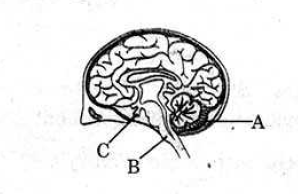
(i) This diagram belongs to which system of the body?
(ii) Name the parts A and B
(iii) The part C is endocranial gland. This is called master gland. What is the name of the gland?
(iv) Which part in this diagram is useful to solve problems and puzzles?
Answer: (i) The diagram belongs to the Central Nervous System(CNS), which includes the brain and spinal cord. It also coordinates all neural functions.
(ii) The parts A and B are Cerebellum and Medulla, respectively
(iii) The name of the part C is Pituitary gland
(iv) Cerebrum is useful to solve problems and puzzles
Or
13(B) (i) Draw a neat labelled diagram of L.S. of flower
(ii) What are the sexual parts in the flower?
Answer: (B) (i)
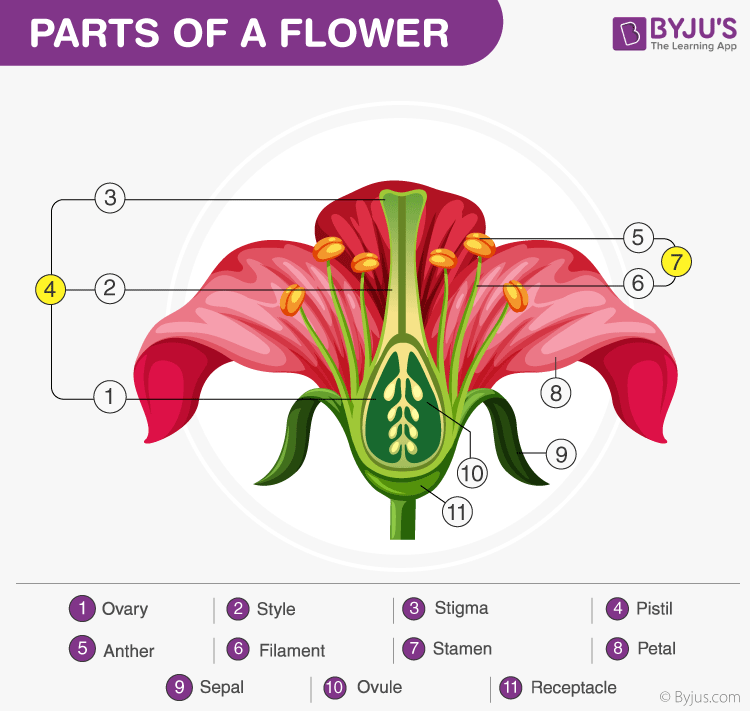
(ii) The sexual parts of a flower are the stamen, the male reproductive organ and pistil, the innermost part and the female reproductive organ. The reproductive parts of a flower consist of the following:
- Stamen: This is the male reproductive organ and is also known as Androecium. It consists of two parts namely: anther and filaments.
- The anther is a yellowish, sac-like structure, involved in producing and storing the pollens.
- The filament is a slender, threadlike object, which functions by supporting the anther.
- Pistil: This is the innermost part and the female reproductive organ of a flower which comprises three parts -stigma, style and ovary. This is collectively known as the pistil.
- Stigma: It is the topmost part or receptive tip of carpels in the gynoecium of a flower.
- Style: It is the long tube-like slender stalk that connects stigma and the ovary.
- Ovary: It is the ductless reproductive gland that holds a lot of ovules. It is the part of the plant where the seed formation takes place.
Part-B
Section -IV 20 X ½ = 10
14. Pepsin: Proteins :: Lipase :___________
- Carbohydrates
- Fats
- Vitamins
- Sucrose
Answer: (B) Fats
15. C6H1206+ 6O2 → ____ + 6H2O + energy
- 6CO2
- C6H12O6
- 6O2
- 12CO2
Answer: (A) 6CO2
16. (I) Chlorophyll is similar to the haemoglobin of the blood
(2) Haemoglobin has iron while chlorophyll has magnesium
- I is correct, 2 is wrong
- I is wrong, 2 is correct
- 1,2 , both are correct
- 1, 2, both are wrong
Answer: (C)1, 2, both are correct
17. The percentage of carbon dioxide in exhaled air is _____
- 44
- 4.4
- 0.4
- 0.04
Answer: (B) 4.4
18. The given blood vessel carries blood from body parts to the heart. Name the blood vessel.
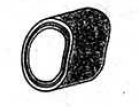
- Artery
- Capillary
- Vein
- Muscular Fibre
Answer: (C) Vein
19. Study the following pairs:
(a) Stethoscope- Rene Laennec
(b) Blood Pressure- Thermometer
(c)Amoeba- Brownian Movement
Identify the mismatched pair:
- a
- b
- c
- None
Answer: (B) b
20. Fill the flow chart of urine formation:

- Tubular secretion
- Tubular filtration
- Tubular excretion
- Urine formation
Answer: (A) Tubular secretion
21. I am a plant. My seeds are used for production of bio-fuel. Who am I?
- Rubber plant
- Neem plant
- Cactus plant
- Jatropha plant
Answer: (D) Jatropha plant
22. The excretory organs in phylum Mollusca is_________
- Renette cells
- Green glands
- Meta nephridia
- Kidneys
Answer: (C) Meta nephridia
23. Leaf movement in mimosa helps to _______
- reduce photosynthesis
- regulate its growth
- release phytohormones
- protect from grazers
Answer: (C) release phytohormones
24. Name the part “X” in the given diagram:
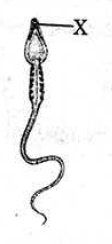
- Acrosome
- Head
- Nucleus
- Tail
Answer: (A) Acrosome
25. In which organisms, do budding occur?
- Yeast
- Paramoecium
- Earthworm
- Amoeba
Answer: (A) Yeast
26. When your stomach is full and there is no need for food any more, a hormone is secreted that suppresses hunger. Name the hormone.
- Ghrelin
- Vasopressin
- Leptin
- Insulin
Answer: (C) Leptin
27. Find out the missing thing from the table:
|
Type of Pyramid |
Base |
|
Pyramid of number |
Number of organism |
|
__________________?______________ |
Flow of energy |
- Ecological pyramid
- Pyramid of energy
- Pyramid of bio-mass
- Giza pyramid
Answer: (B) Pyramid of energy
28. Match the following:
|
a. Father of genetics |
|
b. Natural selection |
|
c. Double helix |
- 1-a, 2-b, 3-c
- 1-b, 2-c, 3-a
- 1-c, 2-b, 3-a
- 1-c, 2-a, 3-b
Answer: (D) 1-c, 2-a, 3-b
29. Which of the following statements is Not true about the Mendel’s selection of garden pea for his experiment?
- Well defined characters
- Bisexual flowers
- Predominantly self-fertilisation
- Cheap in cost
Answer: (D) Cheap in cost
30. The cruel campaign against which bird is initiated in 1958 in China?
- Parrots
- Sparrows
- Crows
- Vultures
Answer: (B) Sparrows
31. This symbol denotes that __________
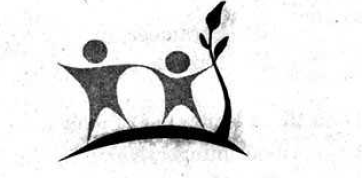
- UNDP
- Percolation pits
- Sustainable development
- Recycling logo
Answer: (C) Sustainable development
32. Ban all pesticides, this means________________
- Promote eco-friendly agricultural practices
- Prevention of pesticides
- Control on usage of pesticides
- Stop biochemical factories
Answer: (B) Prevention of pesticides
33. Which of the following statements is true?
(a) Development in necessary
(b) Development should be Eco-friendly
(A) ‘a’ true, ‘b’ false
(B) ‘a’ false, ‘b’ true
(C) both a and b are false
(D) both a and b are true
Answer: (D) both a and b are true
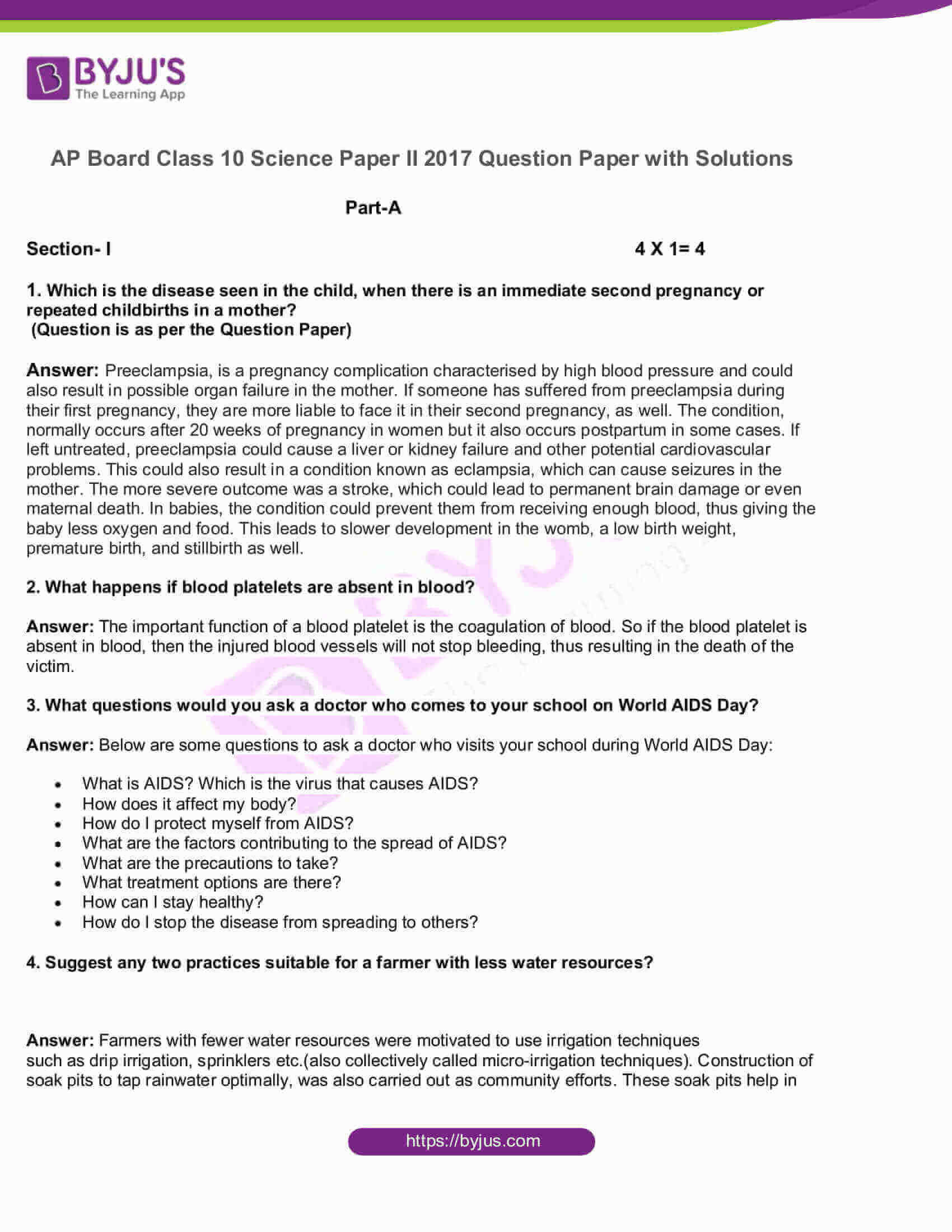
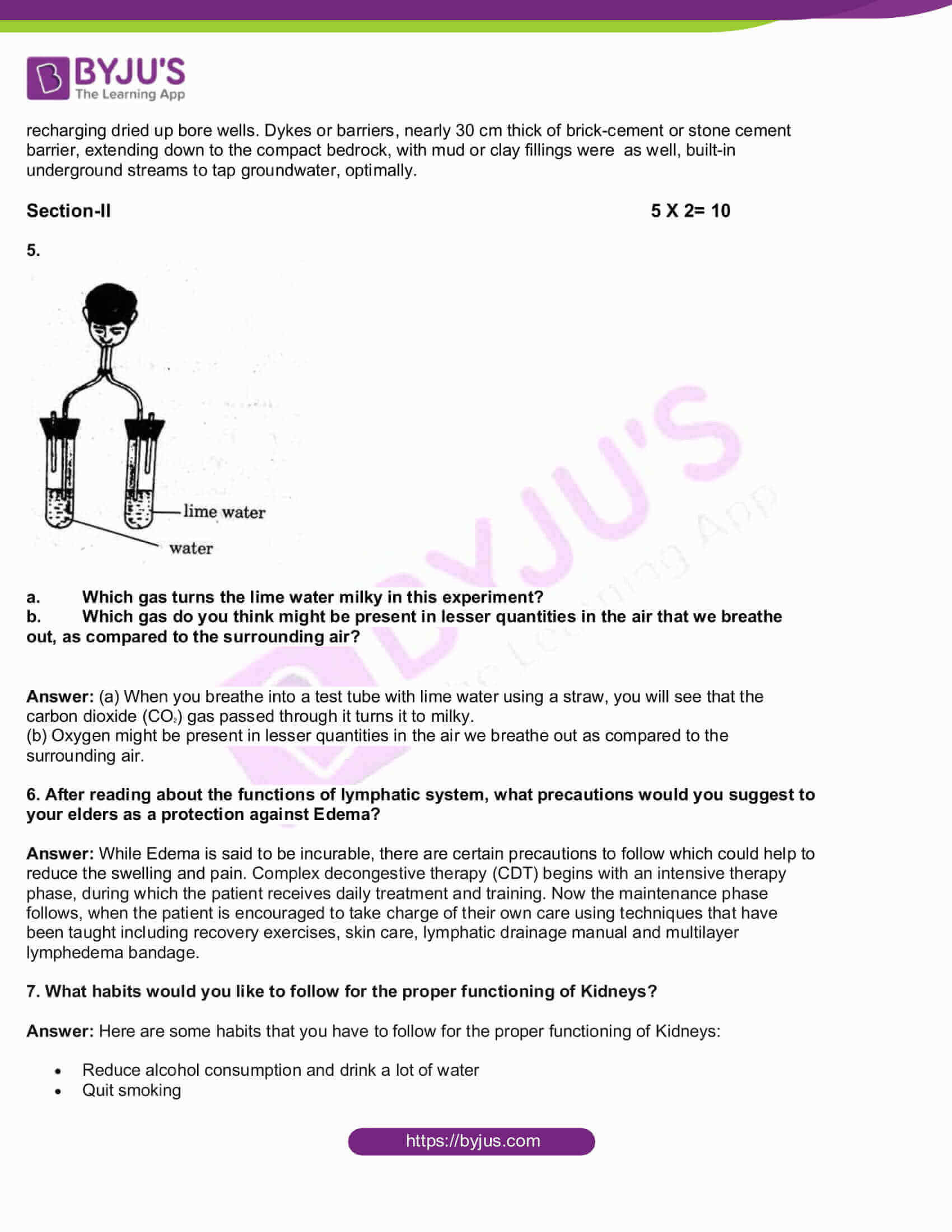
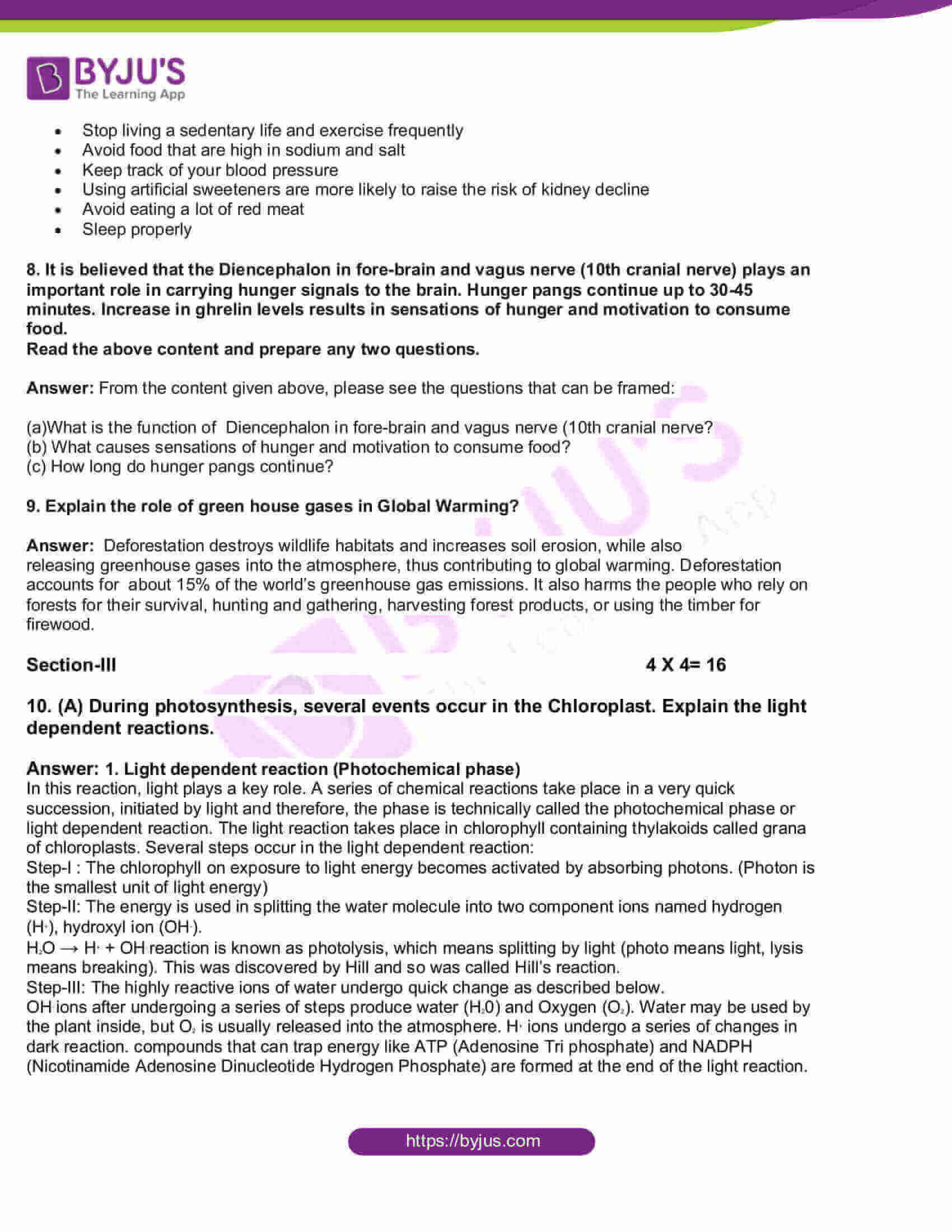
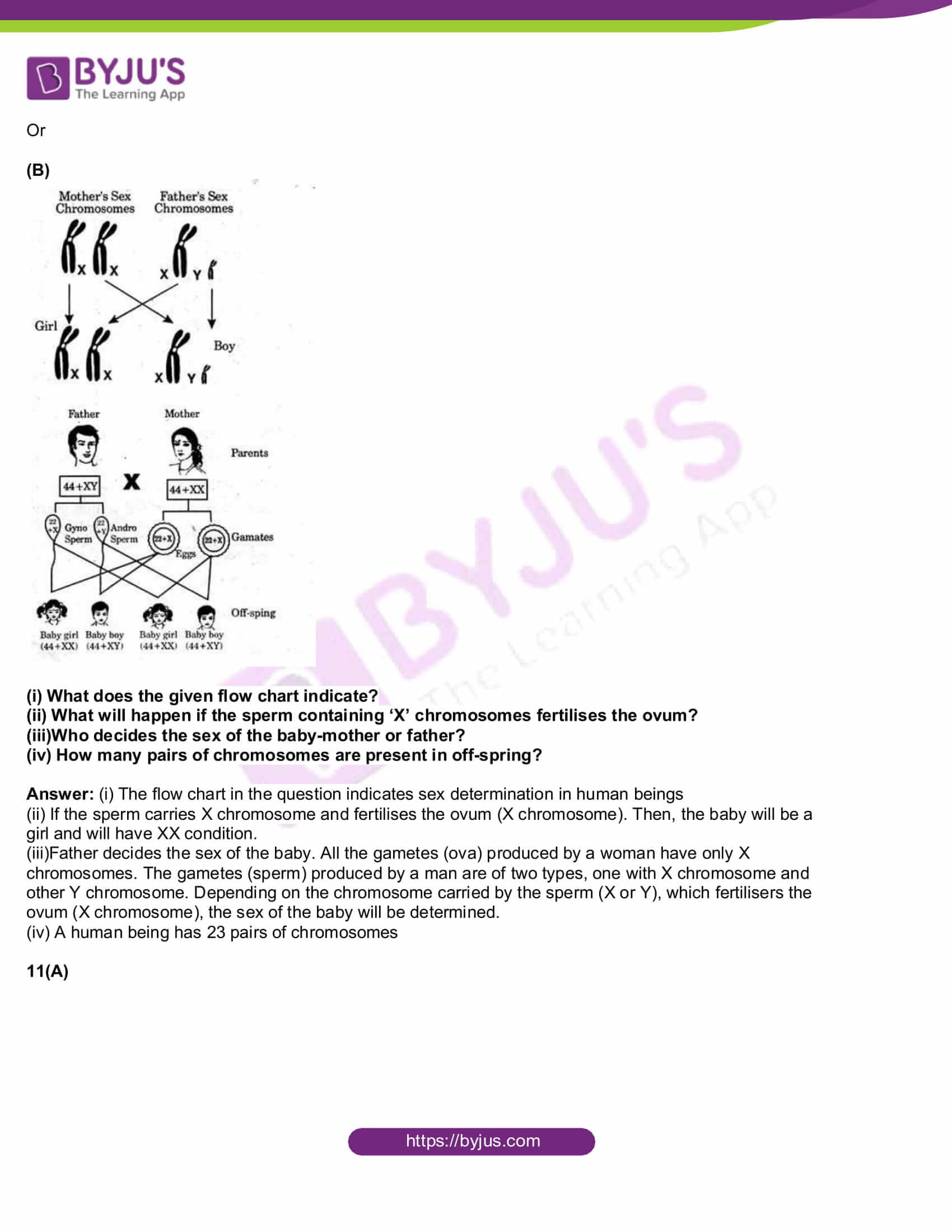
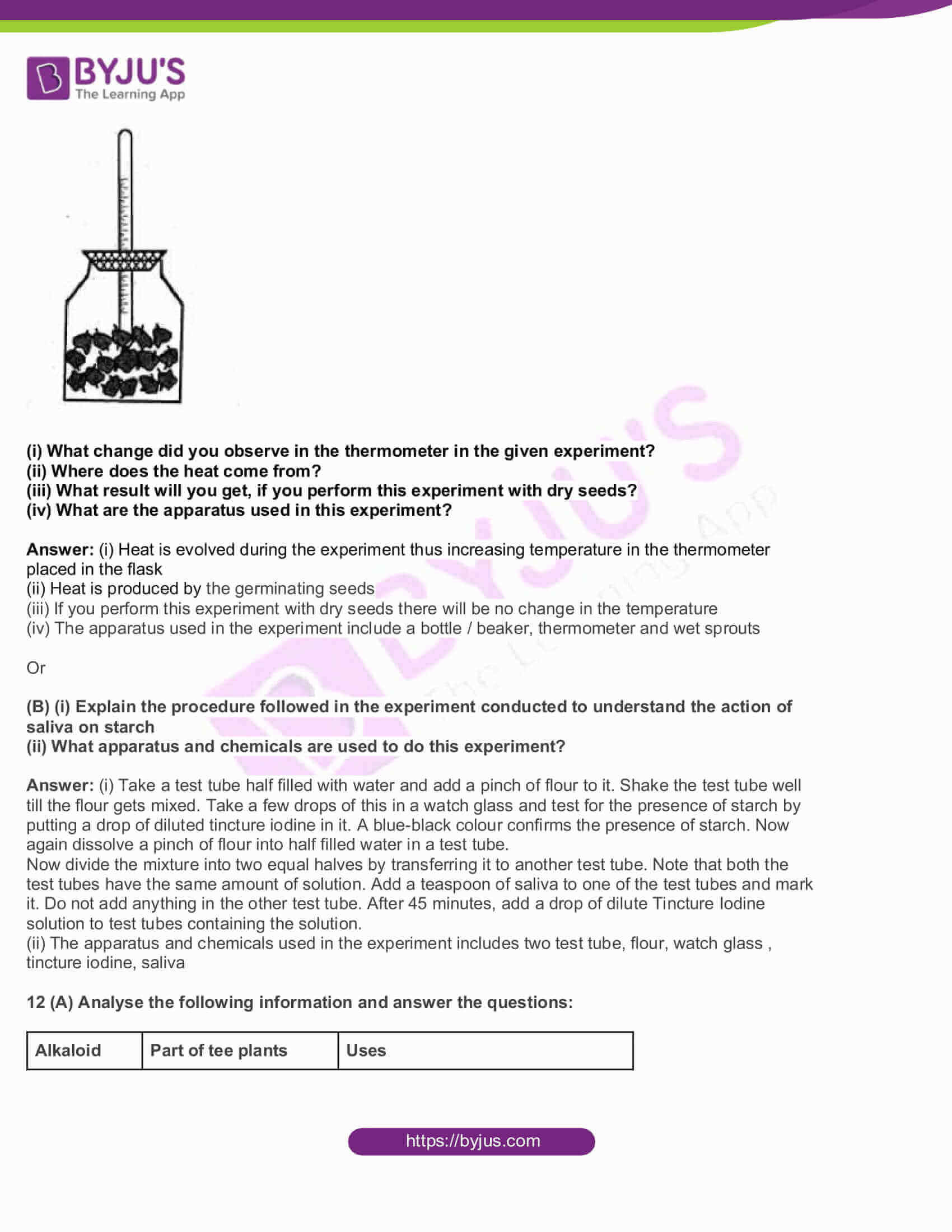
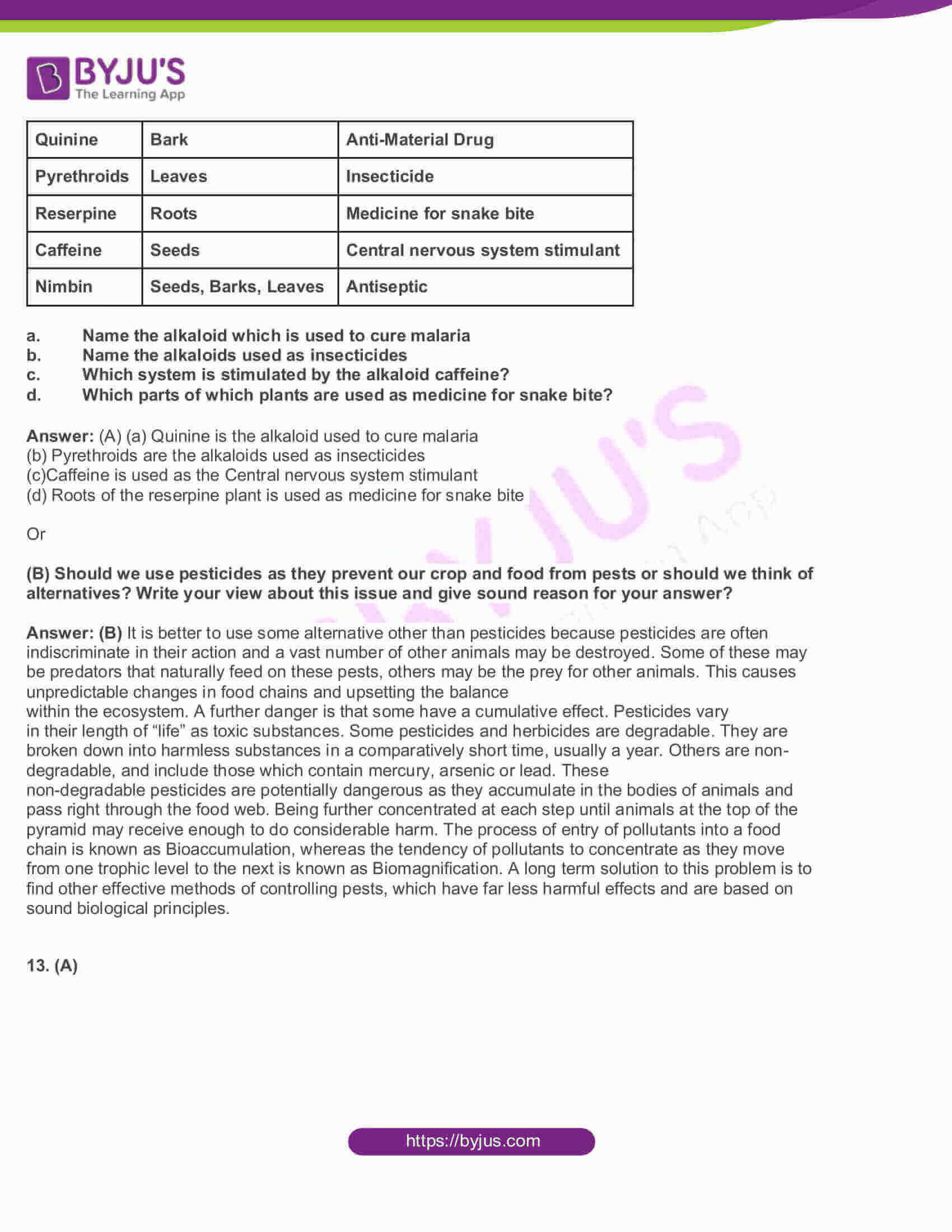
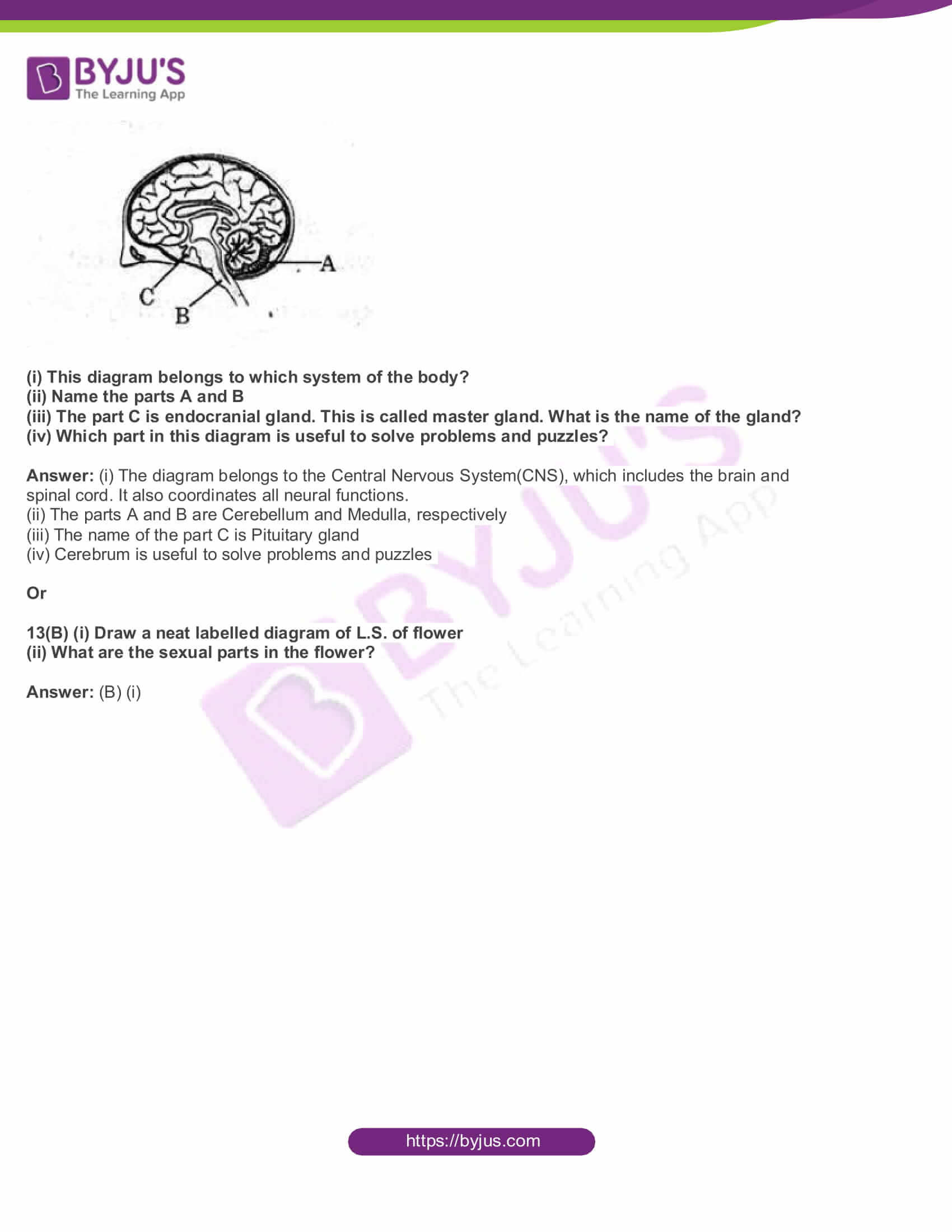
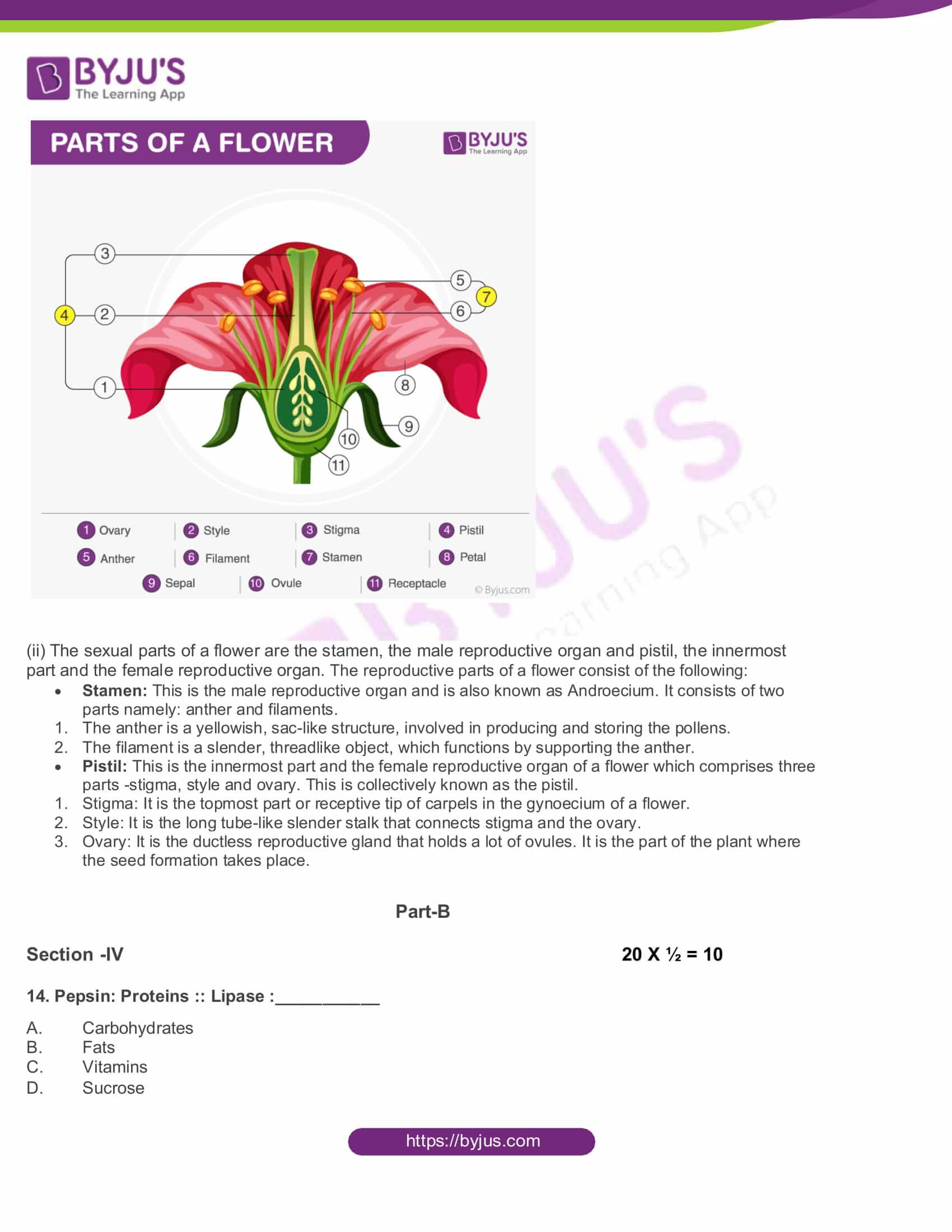
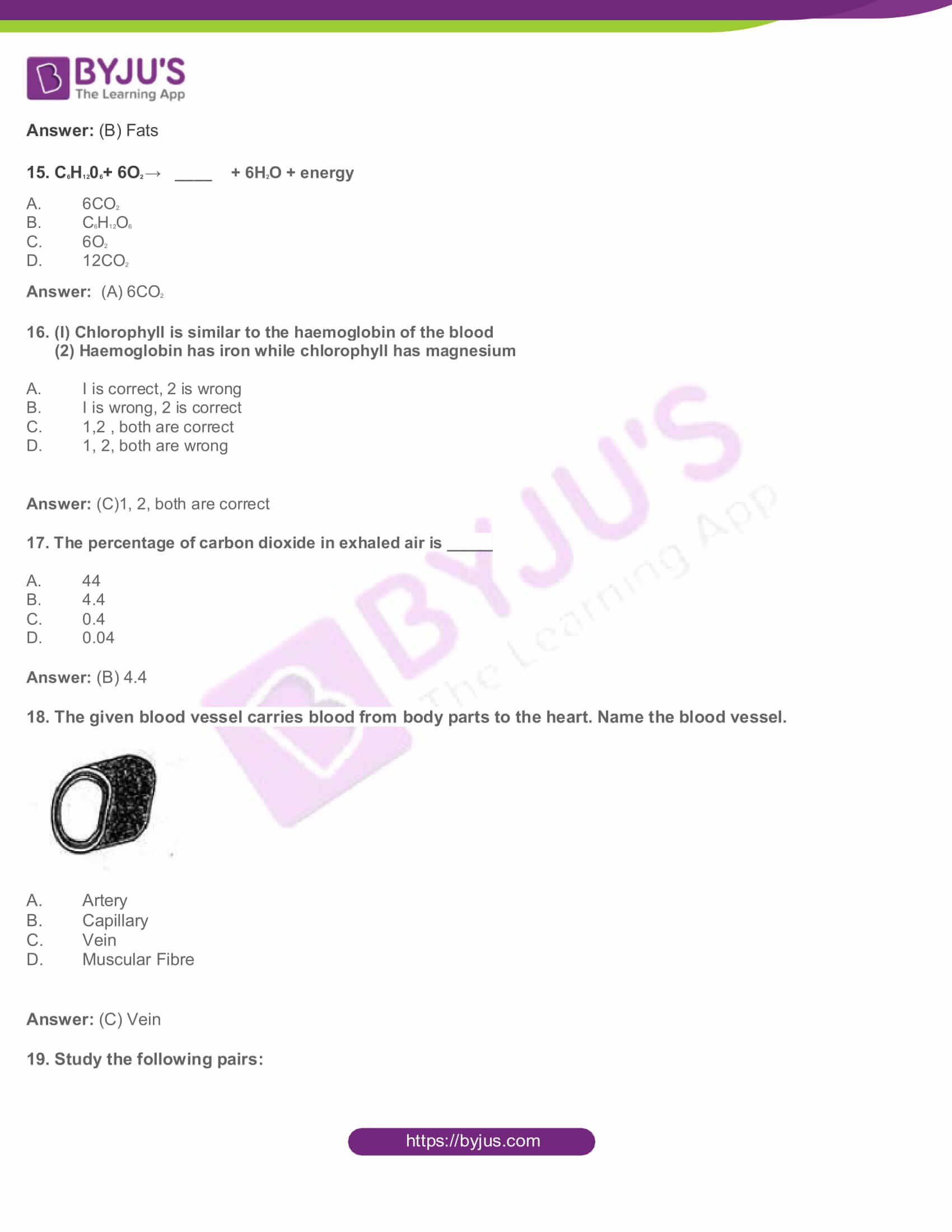
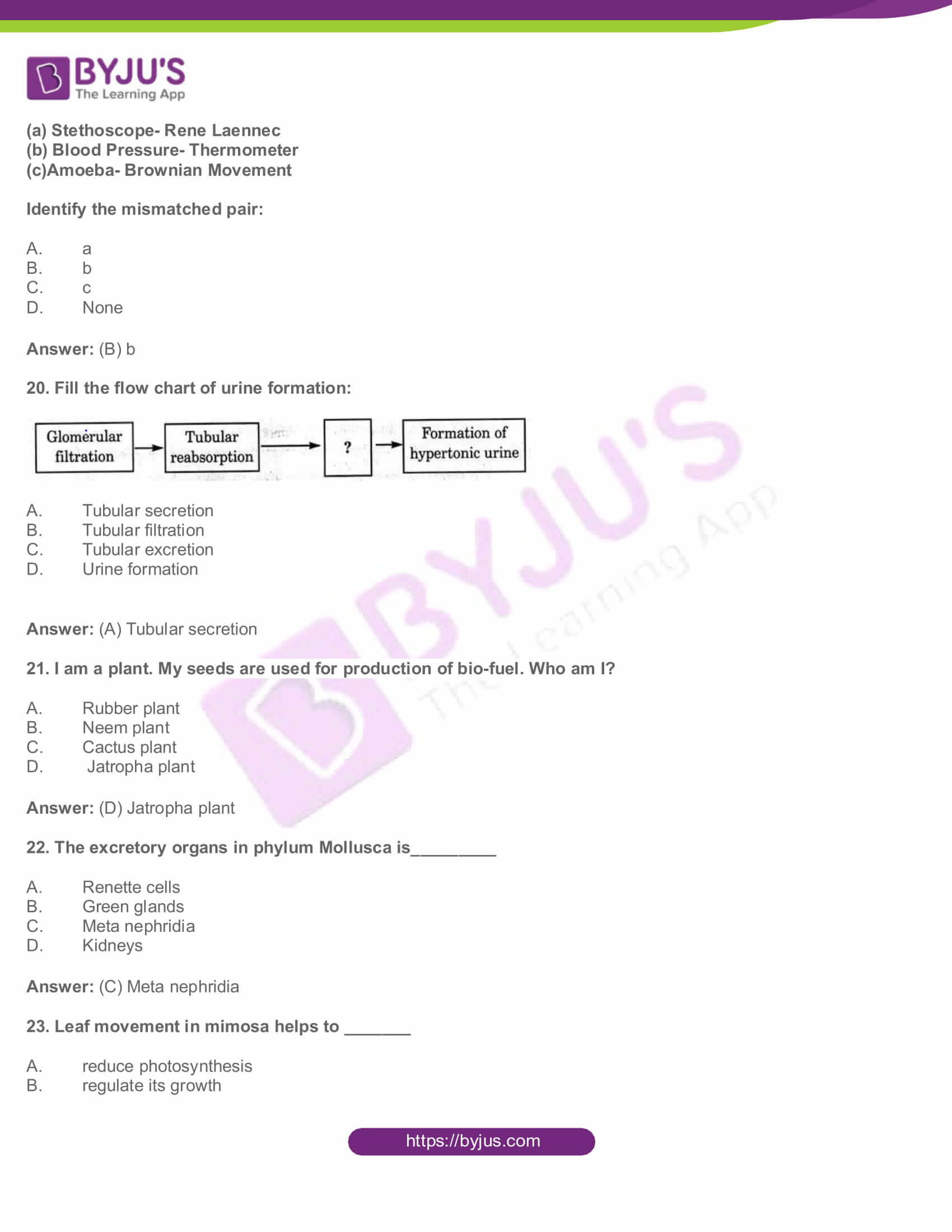
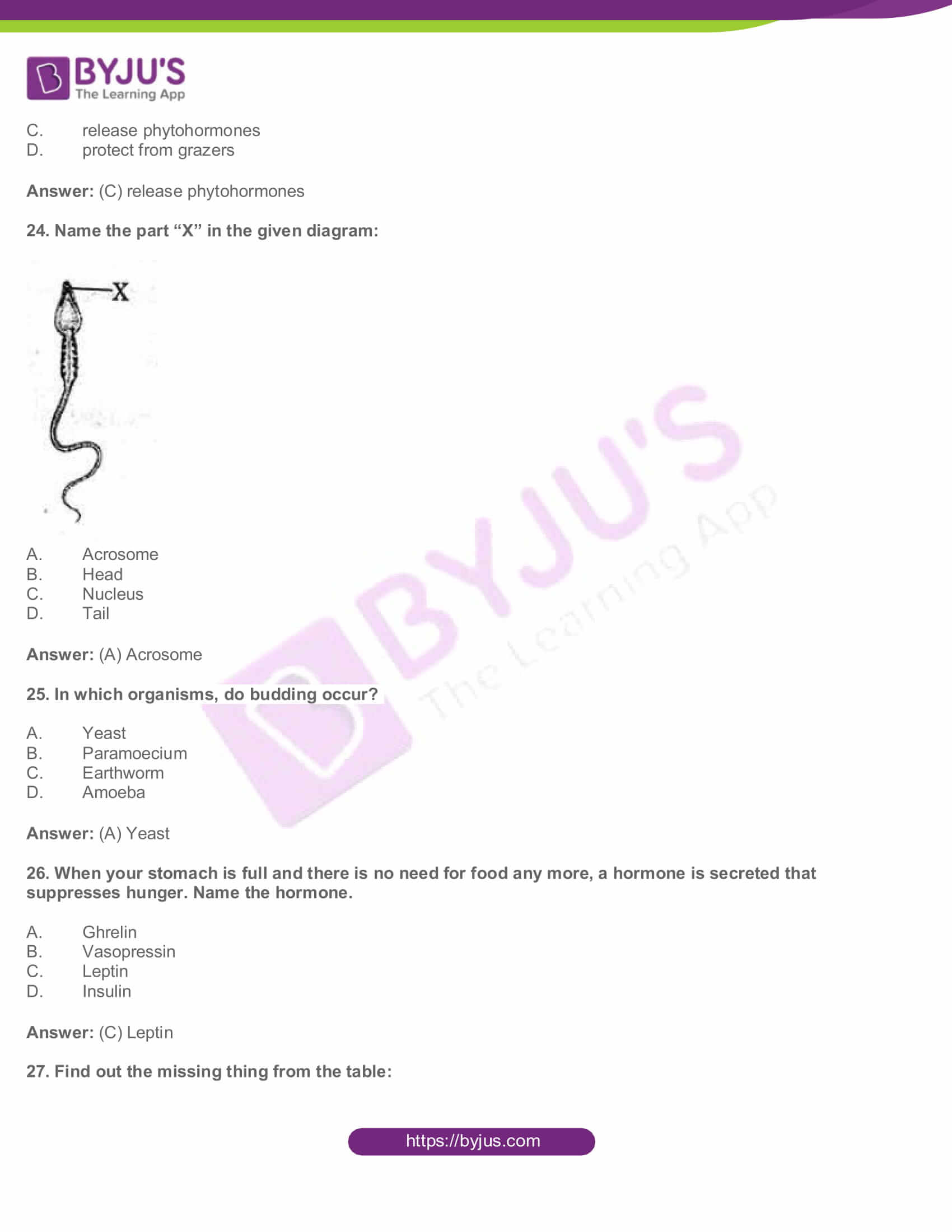
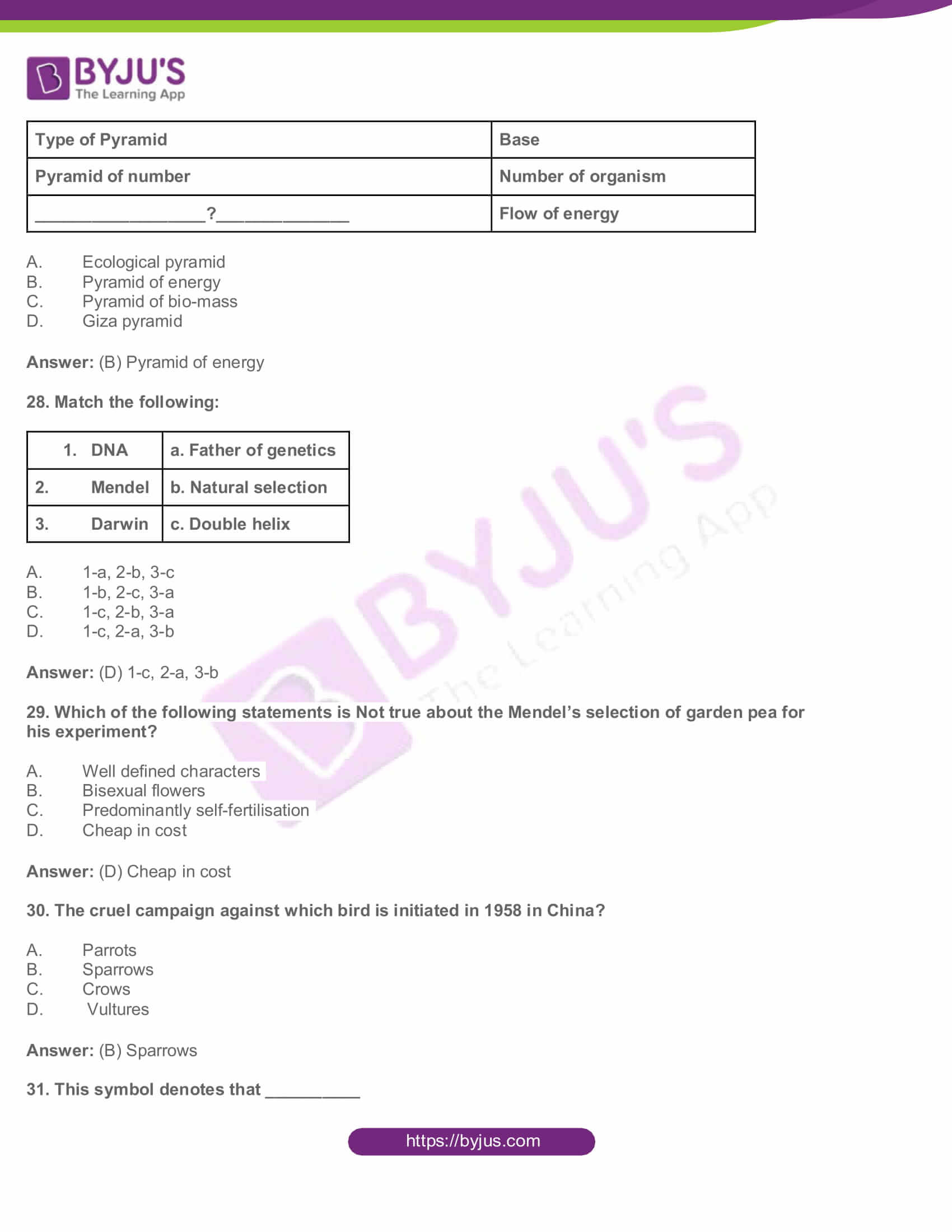
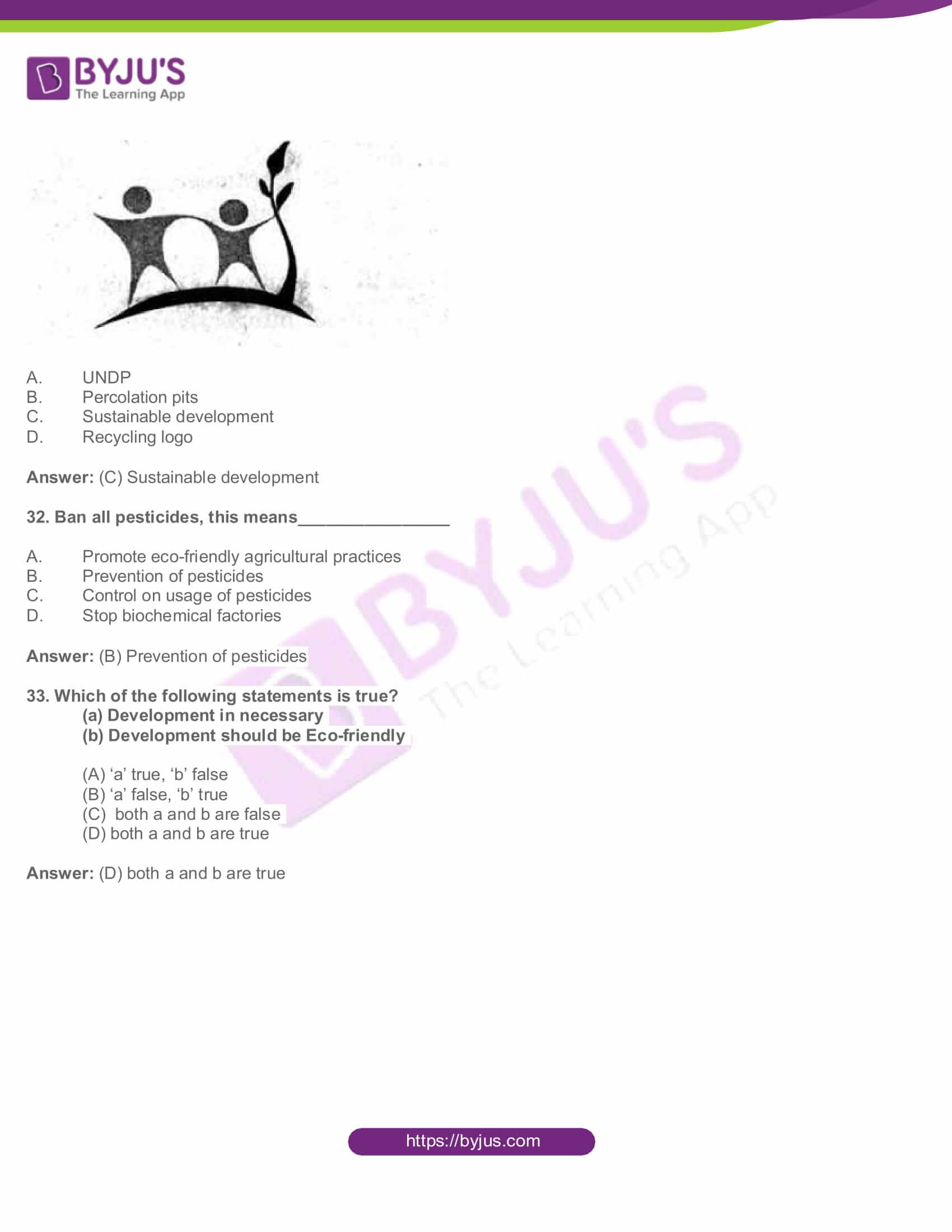
Comments